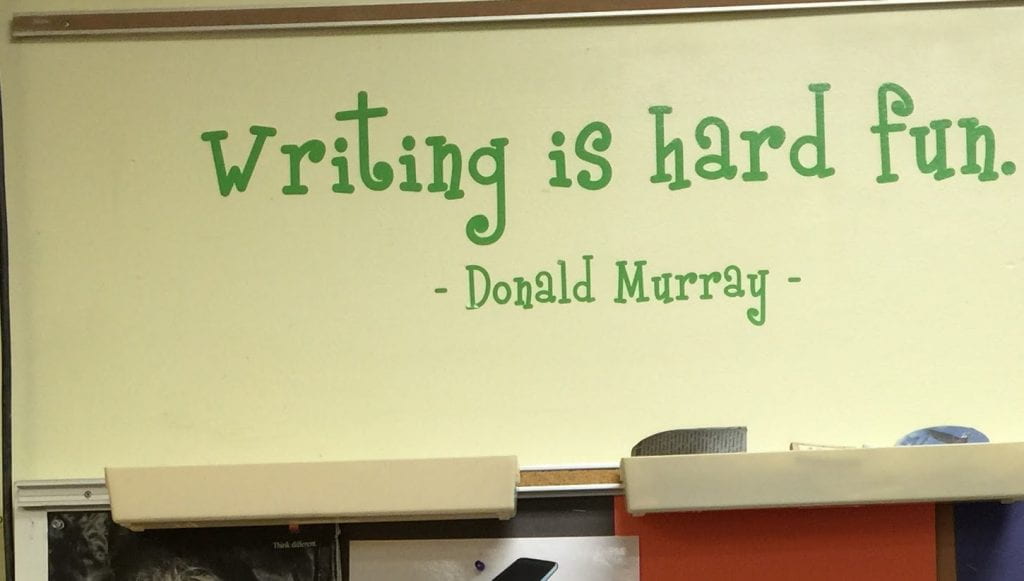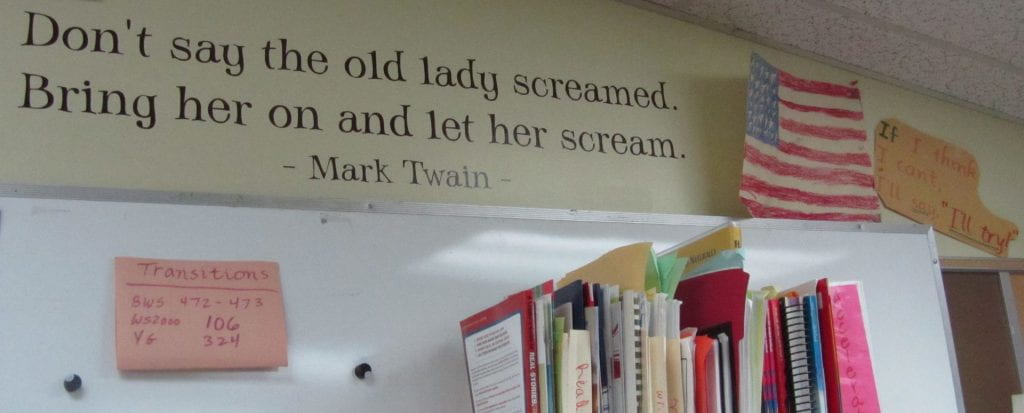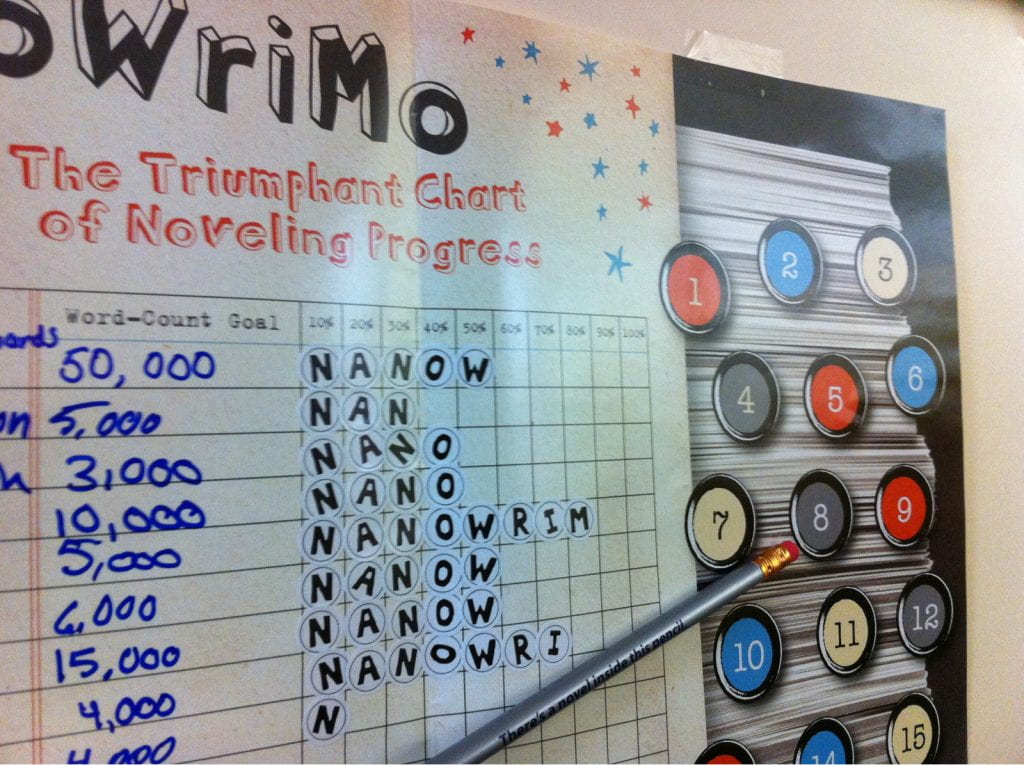Let Them Write!
I love to write. I love to see the words appear on the page, paving an image or dusting off a memory for the reader. But I had no idea how much fun it would be to create a whole new world—to literally create something from nothing, a world that did not exist now exits!
Whether or not anything comes of it really does not matter. The creation itself is thrilling! But it is also work — daily imagining what comes next.
Let me backtrack: My Twitter and blogging friend, Denise Krebs, whom I had previously never met in person, introduced me to NaNoWriMo (National Novel Writing Month) for myself and Young Writers NaNoWriMo for my eighth grade students.
And, until I started NaNoWriMo in 2011, I had no idea what it meant to write. Yes, I am a writing teacher, and I work with my students in choices of topics and offer feedback on the six traits of writing (ideas, word choice, organization, voice, sentence fluency, conventions).
And the writing process. I hate the formulaic five paragraph essay, but you know it gets them past the standardized writing test, if they remember the voice and word choice we work on all year. And if they edit.
But that first year when my eighth graders and I entered NaNoWriMo, my ideas about writing changed. I rediscovered the sense in the writing pedagogy of Peter Elbow. And Donald Graves. And James Moffett. And Donald Murray.
Who would have thought that five teen boys and three teen girls would write for over an hour each day, and then type! You could hear a pin drop. Then they would huddle together and share the bits and pieces of the happenings in their stories. It was amazing. One year, the students invited writing buddies from another state to join them in their Google docs, students also in the project whom they had never met but had collaborated on previous projects. They were all so excited to be authors, wordsmiths to their own stories.
I explained to the students how I started with an idea, a spark. A girl named Blue (for the color of skies long past), lilac bushes, and a gargoyle that blinked. I started writing… “Once upon a time, a long time ago, depending on the time you are in, lived a ten year old girl named Blue.” And I kept writing for 50,000+ words. Just writing. The story developed each day on its own. I put my fingers on the keyboard and from my mind to the page, I created a new world with people not known before; it developed and coalesced and every detail emerged from what was written before in a flow that imagined the rest tomorrow. And today when I write, I close my eyes and imagine my story, letting those images, characters, actions, events fill my page. I just write. And each year my students would ask, “Have you written what happened next to Blue?” — and then proceed to write their own stories.
I remember reading somewhere that Stephen King starts his stories with a question and then wove the answer into his spellbinding tales. I’ve also read that writers just write. As a teacher, that just seems so simple, too simple. What about a plan, a structure? Details? Strong verbs?
So, I would introduce a backup plan for those who needed it — the excellent NaNoWriMo curriculum, and I did present lessons in reading class tying the writing to literary elements as required by our state standards. However, the students drove the purpose with each other in their discussions and sharing. We would draft on paper (except for two who were hyper-typers), and then type that day’s creations in Google Docs. The students share the doc with each other and with me, their teacher. Google Docs allow feedback through comments, but most often the students would simply sit together in front of the screen, reading and talking about their drafts. We grew into a stronger writing community. And once the shared writing conversations began, though a prewriting plan helped some students, the spinning of their tales as they wrote needed only the seeds of their imagination and the opportunity to share to keep the momentum and stories flowing.
I learned I needed to let them write. I needed to let my students write in their way and for their purposes and their own audience. I needed to ask them, “What is it you want me to know here?” And from there, I can suggest… but the reality is, in addition to my lessons, I needed to give them time to write. Characters blossom. Setting stirs. Plot propels. With no plan, only a spark. And, just a note: most of my students passed that state test in scores above our state average, so that says something for just letting them write.
Try it. Pause to see what blossoms when students want to “just write.” Any expectation of a prewrite, plan, draft may extinguish the spark emerging within their imagination, and then what would the world miss? That first year, I experienced the feeling of “I am a writer” for the first time, and my students could feel it too.
Did you see that flash? It’s a spark of an idea from someone — maybe you!



